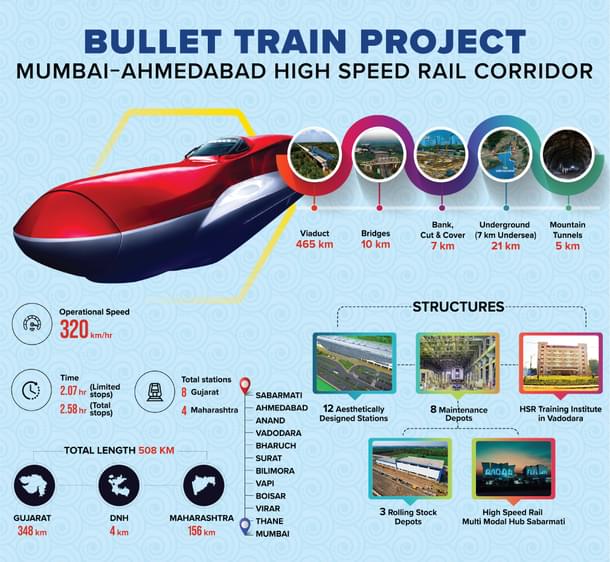Infrastructure
After Inaugural High-Speed Route, India Working On Home-Built Bullet Train
Swarajya Staff
Apr 17, 2024, 04:23 PM | Updated 04:34 PM IST
Save & read from anywhere!
Bookmark stories for easy access on any device or the Swarajya app.


After India's inaugural high-speed rail between Mumbai and Ahmedabad, the country is now working on its own bullet train, reports Economic Times.
Expected to surpass 250 kmph, this home-built bullet train will outpace any existing trains within the Indian Railways system.
"It is being built on the Vande Bharat platform that can already clock a maximum speed of 220 kmph," the report said. The designs are being prepared at the Indian Railways' Integral Coach Factory (ICF) in Chennai. The ICF is at present the only factory manufacturing Vande Bharat train sets in the country.
Globally, high-speed trains such as the French TGV and the Japanese Shinkansen hit speeds of up to 320 kmph.
The Mumbai-Ahmedabad High Speed Rail (MAHSR) will traverse west India’s landscape, covering the 508.17 km distance between Mumbai, the commercial hub in the state of Maharashtra, with Ahmedabad in Gujarat, Indian Prime Minister Narendra Modi's home state.

Using rolling stock based on the Japanese Shinkansen’s E5 series, which boasts speeds of up to 320 kmph, the new train will sharply reduce travel time between the two cities, from the current six hours to just two hours.
The made-in-India bullet trains will operate on recently announced north, south, and east corridors, using more indigenous technology and manufacturing.
For the uninitiated, the Mumbai-Ahmedabad High Speed Rail forms part of the western corridor that is being developed with Japanese collaboration and technology.
The National High-Speed Rail Corporation Limited (NHSRCL) — a special-purpose vehicle created for the project by the Railway Ministry, which holds 50 per cent equity, and the state governments of Gujarat and Maharashtra, which hold 25 per cent equity each and is implementing the bullet train project, recently announced that 300 km of pier work had been completed. Land acquisition for the entire 508 km stretch was completed.





